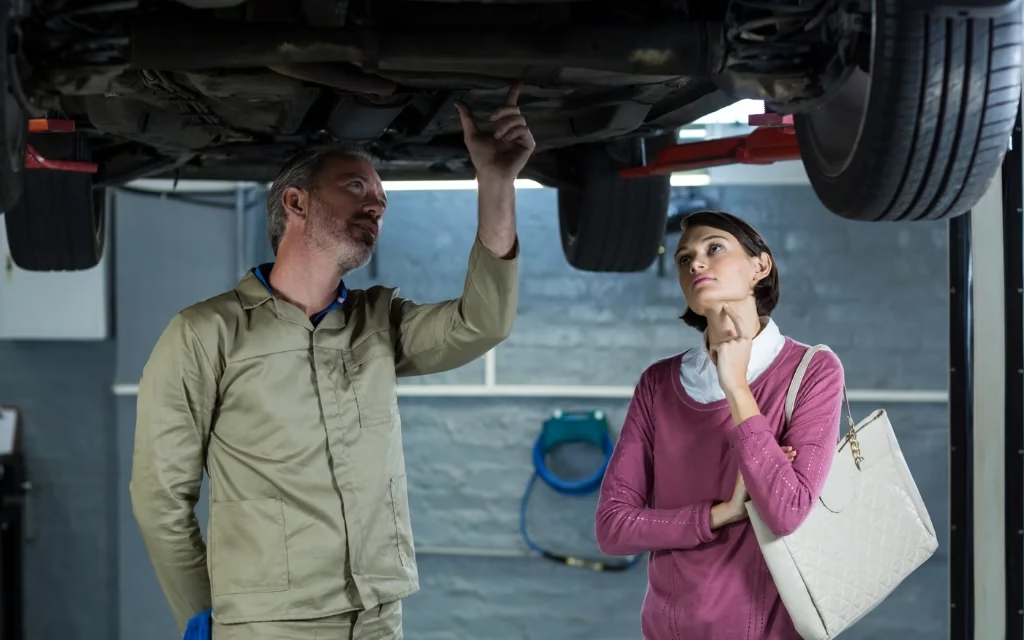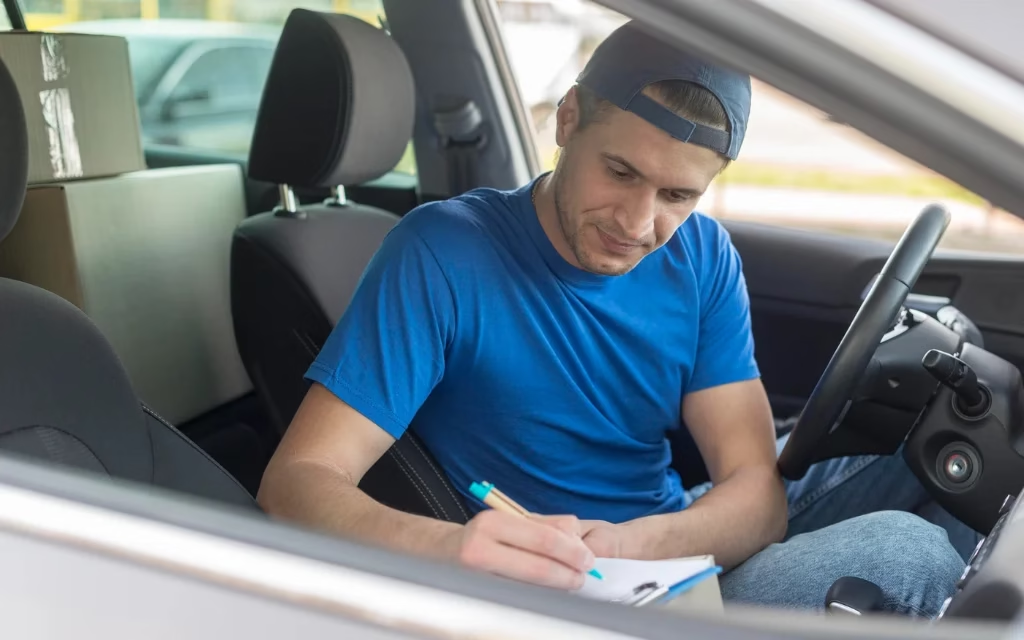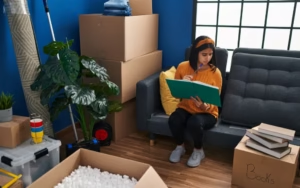It can feel like searching for buried treasure when you buy a used car in Australia. There is a dependable, well-kept car out there waiting for you, but there are also a lot of lemons that will cost you a lot of money. How well you check out the used car test drive checklist before you sign on the dotted line is often the only thing that helps in finding an excellent deal instead of making a costly mistake.
This guide shows you the best way to test drive a used car by combining expert inspection steps with advice from mechanics, motoring experts, and regular Australian drivers. Think of it as your own map, from the time you walk up to the car until you shake hands with the seller.
Being There for the Initial View
When you first see the car, don’t give in to the urge to fall in love right away. Before showing their cars, sellers—especially dealers—often wash and polish them. It’s easy to get sidetracked by the pretty paint and nice smell inside the car. But the details hold the real truth.
Take your time walking around the car. Check the bottoms of the doors, the wheel arches, the area around the fuel cap, and the seals around the windows for rust bubbles. Rust is a big deal in Australia’s coastal towns because the salt air can slowly eat away at the bodywork. If the panels don’t match in color or there are ripples along the body, it could mean that the car was fixed after an accident.
Gently press down on each corner of the car. If it bounces more than twice, the shock absorbers may be worn out. Make sure that the doors, the hood, and the trunk all open and close easily and lock properly. If the gaps aren’t even, the car may have been in a crash.

Looking over the Paperwork and the Past
A used car that looks clean on the outside could have a bad past. That’s why you should start with the numbers. Get the registration information and check it on your state’s transportation authority website. Check that the make, model, and year are all the same and that the rego is up to date.
Next, check the PPSR (Personal Property Securities Register) online for only $2. This tells you if the car has been stolen, written off, or has unpaid loans. You only need the VIN, which is a 17-character code that can be found on the compliance plate or inside the driver’s door. Be careful of unofficial websites that charge more than the government does.
Request to see the service logbook. Most cars in Australia should be serviced every six months or every 10,000 to 15,000 kilometers. If you skip services, there may be mechanical problems that you can’t see. While you’re at it, check the odometer reading.
The average Australian driver drives about 12,000 to 15,000 kilometers a year. If the numbers seem too low for the car’s age, it may have been messed with or it may have been sitting unused for a long time, which can also cause problems.

Looking Inside Like a professional
Come in and look around slowly. The car’s life can be told by worn seat bolsters, sagging headliners, or cracked dashboards. If you smell cigarette smoke, it might be hard to get rid of and could mean that there is still some in the ventilation system.
Look at every seatbelt to see if it’s fraying or fading. Wind each window down and back up. If the glass is sticky, it could mean that the regulators are worn out. To see if water is getting in, lift the carpet in the trunk and under the floor mats to see if they are wet or rusty.
Go over the controls on the dashboard, such as the air conditioning, heater, stereo, and warning lights, as well as the indicators, wipers, headlights, and hazard lights. Everything should work the way it should. If it doesn’t, ask yourself and the seller why.

Opening the Bonnet
The engine is the most important part of a car. Check the oil level by pulling out the dipstick. If the oil is low, it could mean that the car hasn’t been well cared for. If the oil is creamy or milky, it could mean that the head gasket has blown. Check the radiator and overflow tank. Rusty water is not good.
Look for leaks, loose wires, or rust on the battery terminals. There shouldn’t be strong smells of petrol or oil in a car that is well taken care of. The hoses should feel strong, not brittle.

The Truth Test for the Undercarriage
If you can, crouch down and look under the car. Rust can build up on the underside of cars in Australia, especially older ones from coastal areas. Look for new patches of underseal; these can sometimes be used to cover up rust.
The tread depth on tires should be at least 1.5mm across 75% of the surface, and the wear should be even. If your tires are different brands or are wearing unevenly, it could mean that your wheels are not aligned properly or that there is a problem with your suspension.

Take the test drive of the car
The test drive is your chance to get a feel for the car’s personality and any issues it may have. Make sure the seat and mirrors are comfortable before you even move. If the steering feels loose or the pedals are in a strange place, it could be a dealbreaker for long drives.
Listen carefully when you turn on the engine. If your car has trouble starting, makes knocking noises, or has visible exhaust smoke, it could be a sign of trouble. If your car is smoking blue, it’s burning oil. If it’s smoking black, there may be a problem with the fuel mixture. If it keeps smoking white after warming up, it could mean that coolant is leaking into the engine.
While you’re driving, pay attention to how the steering works. If the wheel pulls to one side or is off-center, it could mean that the alignment is off. Check the brakes. They should stop the car in a straight line without pulling or shaking. The handbrake should keep the car still on a steep hill.
Go through all the gears. The clutch should engage smoothly, and the manual gearbox should change smoothly without grinding. In an automatic, the shifts should be smooth and without any pauses or bumps.

Paying attention to what isn’t claimed
One way to get around is to turn off the radio while you drive. You should listen for squeaks, rattles, or whining sounds coming from the engine or suspension. The ride should be firm but not too rough on bumpy roads. If it crashes over bumps or feels like it’s going to fall over, you might need to fix the suspension.
Finishing Up the Inspection
Take a last look around the car after the drive. Check underneath it for any new drops of oil, coolant, or brake fluid. Check the temperature gauge again. If it gets too hot during a short test drive, that’s a big red flag.
Why it’s worth it to have a pre-purchase inspection
Even if everything seems fine, it’s worth the money to have a licensed mechanic check it out. This can cost a few hundred dollars in Australia, but it can save you thousands of dollars in repairs. Mechanics have tools that help them find problems that most buyers don’t see.
The Truth About Australian Consumer Law
You have some rights under Australian Consumer Law if you buy from a licensed dealer. You may also be able to get a statutory warranty, depending on how old and how many miles the car has. But when you buy something privately, you have to be careful because you’re buying at your own risk.
A Look at the Australian Used Car Market
• Market size: In 2024, Australia sold more than 3 million used cars, almost twice as many as new cars.
• Average price: The average price of a used car in Australia in 2024 was about $38,000, which is more than the $31,000 it was in 2020 because there weren’t enough cars for sale.
• Toyota, Mazda, Hyundai, and Ford are the best-selling brands in the used market because they are known for being reliable.
• Buyer preferences: SUVs are the most popular used cars right now, with the Toyota RAV4 and Mazda CX-5 leading the way in sales.
Cost of Inspection Data
• Fees for pre-purchase inspections: In big cities, a mechanic usually charges between $200 and $300. Mobile inspections may cost a little more but save time.
• Money saved by not having an inspection: According to industry reports, buyers who didn’t have inspections had to pay an average of $2,500 in repairs within the first year.
Common Problems Found During Inspections
• Brake pads and discs that are worn out (30% of the used cars we looked at)
• Suspension bush wear (25%)
• Oil leaks from gaskets (20%)
• 15% of the time, the tires are bald or worn unevenly.
Facts about legal and consumer protection
• In Victoria, the dealer’s statutory warranty only applies to cars that are less than 10 years old and have less than 160,000 km on them. The warranty is good for three months or 5,000 kilometers.
• Rules for private sales: There is no warranty, but the seller is still required by law to tell you if the car is written off or has money owed on it.
Last Words on Buying a Used Car in Australia
If you take the time to look it over carefully, a used car can be a smart and cheap choice. Your checklist for test-driving a used car is more than just a list of things to do; it’s also a way to protect yourself from hidden problems and unexpected costs.
Be patient with every inspection. Listen to your gut. And don’t forget: it’s better to leave a car that makes you uneasy than to drive home with a regret that costs thousands.
1. Why is a used car test drive checklist essential?
A checklist helps buyers look at every part of a car before they buy it. It makes sure you look for hidden problems, safety issues, and signs of past accidents, which will save you money in the long run.
2. What should I look at before I start the test drive?
Check the outside, the inside, under the hood, and under the car. Check for rust, dents, fluid leaks, worn tires, and other signs of bad care. Check the car’s registration, service history, and make sure there are no debts or other obligations on it.
3. What should I do during the test drive?
Drive on different kinds of roads and at different speeds. Check how quickly it accelerates, brakes, turns, and changes gears. Check for vibrations, listen for strange sounds, and make sure the car doesn’t pull to one side when you drive it.
4. What warning signs should make me think twice about buying the car?
Blue, black, or white smoke coming from the exhaust, the engine getting too hot, oil leaks that don’t stop, broken seatbelts, paintwork that doesn’t match, or any sign that the odometer has been tampered with are all big red flags.
5. Should I still have a mechanic check the car after a test drive?
Yes. A licensed mechanic can find problems that aren’t obvious during a normal test drive, such as hidden structural damage, problems with the engine’s internals, or worn-out suspension parts.
Read more about top tips to buy used cars in Australia
- BMW iX5 Hydrogen: 9 Bold Truths About This Groundbreaking SUV That Could Change Mobility
- BYD Bao 5 Spotted in Sydney: 9 Bold Reasons This Hybrid Off-Roader Could Inspire Buyers or Worry Rivals in the SUV Market
- 7 Exciting Reasons Why the BMW iX 1 Production Launch Changes the EV Game
- BYD Sealion 05 Shocking Launch: 9 Powerful Reasons This EV Will Change the Market
- Volvo EX90 Review: 9 Stunning Reasons Why This Luxury 7-Seater Electric SUV Could Redefine the Future






